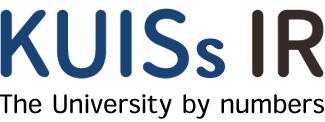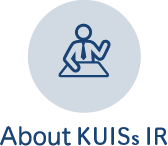Raising the Abilities of Faculty and Staff
Translation : Hamana Atushi (2018). Meeting the Challenges of Learning Outcomes-based Education. Toshindo: Tokyo. Chapter 5, Section 3-Cont
Raising the Abilities of Faculty and Staff
In order to raise the quality of higher education, faculty development (FD) is important. It is something that is a part of each university and is implemented at all institutions. On this point, however, the participation rate of faculty in FD events remains as low as before, with only about 11% of all universities having near universal participation rates. Only 39% of institutions have a faculty participation rate of over 75%. Similarly, only 54% of universities have implemented peer visits of faculty classrooms, while only 34% of institutions have faculty workshop organizations promoting active learning.

-
Likewise, staff development (SD) programs, which are devoted to raising the management abilities of faculty and staff charged with the administration of the university and the institution's strategic governance is only found in 35% of universities. SD events devoted to strategic planning skills is only present in 26% of institutions.
In order to improve the management of learning and teaching, therefore, more and more attention is paid to the separation of teaching units from faculty academic units. For example, in Tsukuba University, the institution has introduced faculty "teams" that are organized based on teaching functions and are separate from academic/research units. This is seen as a way to reinforce the viewpoint that the main unit of organization is from the standpoint of the student learner, and by extension, the degree program they are a part of. In Kanazawa University, teaching units have become the central institutional organizations, as the university attempts to create a structure that is flexible and responsive to societal and learning needs. Kanazawa University is also reorganizing into larger, student-based academic units where students have more course choices to choose from once they enter their faculty program. It is a way to see learning and teaching management from a student's point of view.
At present, the Central Education Deliberative Council's Sub-committee on Future Ideas is further developing reformists structures in the field of engineering. Up until now, full-time faculty had affiliation with just one academic unit. Faculty with joint appointments tended to be limited to part-time faculty. Now, however, attempts have been made even in well-established programs to have faculty affiliate with multiple departments, or collaborate with faculty outside of engineering, or link faculty across graduate and undergraduate programs. Additionally, mechanisms and criteria have been set up to allow more faculty to emerge from the world of industry in order to insure instructors with real-world experience. Even as some new fields are able to establish this flexibility to insure the development of new human resources, however, other fields have been limited by professional/credential regulations such as in the medical field or in teaching. Likewise, in the fields of humanities and social sciences, it is still unclear whether it will be easy to see such quick changes.

-
With the simultaneous advance of both diversity of programs and establishment of quality assurance, the need to establish mechanisms for learning and teaching management will only become more pressing. To conclude this discussion, let's lay out the issues needing reform through the establishment of learning and teaching management schemes in higher education.
- The need to better express the policies of learning and teaching management in a way that encompasses the current goals of admissions policy, assessment policy, and curriculum policy, as well as diploma policy at both the institutional and degree level.
- The facilitating of shared awareness among faculty and staff in learning and teaching issues. The creation of joint study groups, SD-FD events as well as the constant deployment of IR to share key information can help stakeholders better understand the realities related to education.
- The implementation of learning information management systems that can allow for the collection and arrangement of existing student panel data (such as through individual student learning portfolios, learning behavior surveys etc.). This will help us better understand student changes over their time in university.
I believe these three initiatives are necessary, what do you think?









